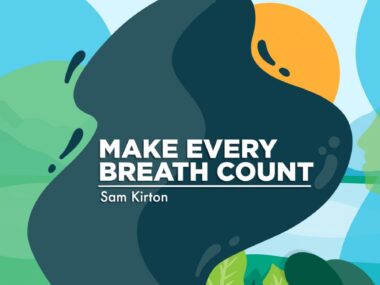Life after a lung transplant requires ongoing care and surveillance
Patience and grace are crucial during the lengthy healing process
Written by |

When I was discharged from the hospital following my bilateral lung transplant, it was the beginning of a new segment of my journey. I went into surgery on July 10, 2021, and was discharged on July 20. This was about three and a half years after my diagnosis of idiopathic pulmonary fibrosis (IPF).
I left Inova Fairfax Medical Campus, in Falls Church, Virginia, with bottles of medications, a scale, and a blood pressure machine. I’d already purchased a home spirometer. I also had appointments scheduled — a lot of them.
Our home is more than 90 minutes from Inova on a good day. Before my lung transplant, the presentations for transplant candidates included a provision that post-transplant patients remain in close proximity to the hospital for about 90 days following discharge.
Once I was listed for transplant, we found an apartment complex near the hospital with availability. We took great care to ensure we’d arranged as many necessities for post-transplant life as possible. Furniture was rented from a local company. Power of attorney was provided to a close friend to allow for the final execution of the apartment lease, utilities, and furniture rental. That allowed me to focus on the task of healing.
My post-transplant regimen
Upon discharge, I initially wasn’t allowed to drive. My care team wanted me to ride in the back seat when possible. And for the first several weeks I rode with a pillow between the seat belt and my chest. That meant my wife, Susan, had to be involved in all my appointments.
Those meetings filled our calendar in the weeks following my transplant. I visited the clinic several times a week for the first month, and then once a week for the subsequent two months. Because our journeys are all unique, members of my care team spent a fair amount of time adjusting my medications. They’d made 31 changes by the end of October 2021.
My first post-transplant bronchoscopy occurred in the hospital before I was discharged. Two additional bronchoscopies were conducted within 90 days of my release.
Pulmonary rehabilitation filled the days when I didn’t have any clinic appointments or procedures. My team was used to working with post-transplant patients. Its program was one of graduated difficulty focused on endurance and strength training. The incision made for my lung transplant was a sternotomy, which splits the breastbone to allow the surgeon access to the lungs. The rehab team taught me how to lift and how much to lift — using both machines and free weights — without affecting the healing of my breastbone.
I improved my endurance using a recumbent bicycle and a treadmill. We gradually increased the resistance on the bike, as well as the speed and incline on the treadmill.
I would offer one word of caution regarding rehabilitation: Be patient with yourself. I had to add a sports medicine doctor to my care team during my time in pulmonary rehab because of an injury. The doctor wrote in my record that the injury was from “enthusiastic rehabilitation.”
Don’t expect to be released from the hospital following a lung transplant and resume the life you knew before your diagnosis. Allow your body some time to heal. It’s not going to be magical. Grace will be the greatest gift you can give yourself.
Susan and I didn’t travel for the first year following my transplant because my care team wanted us to stay close to home. I had to continue regular clinic visits and care for my overall health, including appointments with my primary care physician, dermatologist, dentist, and cardiologist.
Now that I’m three years post-transplant, my clinic visits are every three months. Most other medical appointments — except for my dentist, whom I see quarterly — will become annual.
A transplant was not a cure for my IPF. I traded one set of medical issues for another and require a lifetime of medical surveillance. I’ve experienced many life milestones since my transplant and have many more left. I’ll keep doing my part to ensure I make every breath count.
Note: Pulmonary Fibrosis News is strictly a news and information website about the disease. It does not provide medical advice, diagnosis, or treatment. This content is not intended to be a substitute for professional medical advice, diagnosis, or treatment. Always seek the advice of your physician or other qualified health provider with any questions you may have regarding a medical condition. Never disregard professional medical advice or delay in seeking it because of something you have read on this website. The opinions expressed in this column are not those of Pulmonary Fibrosis News or its parent company, Bionews, and are intended to spark discussion about issues pertaining to pulmonary fibrosis.






Ligon Business & Estate Law
This article provides a heartfelt and informative account of life after a bilateral lung transplant. It emphasizes the importance of patience and self-care during the recovery process. The detailed description of the post-transplant regimen, including frequent clinic visits, medication adjustments, and pulmonary rehabilitation, highlights the commitment required for successful recovery. The advice to be patient and give oneself grace is invaluable for anyone undergoing such a significant medical journey
Samuel Kirton
Thanks for reading ym column and your comments.